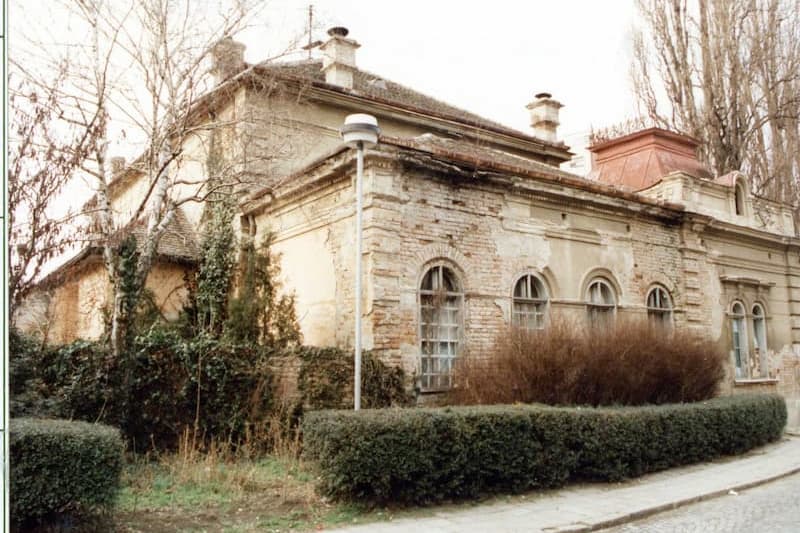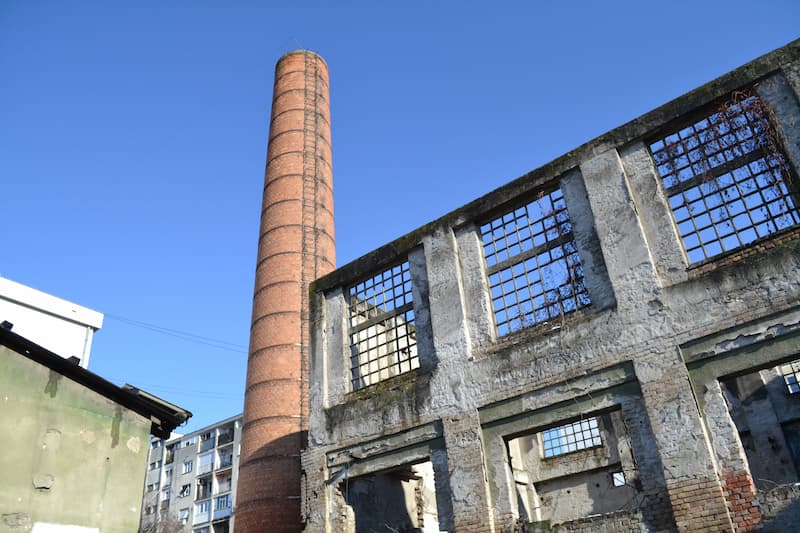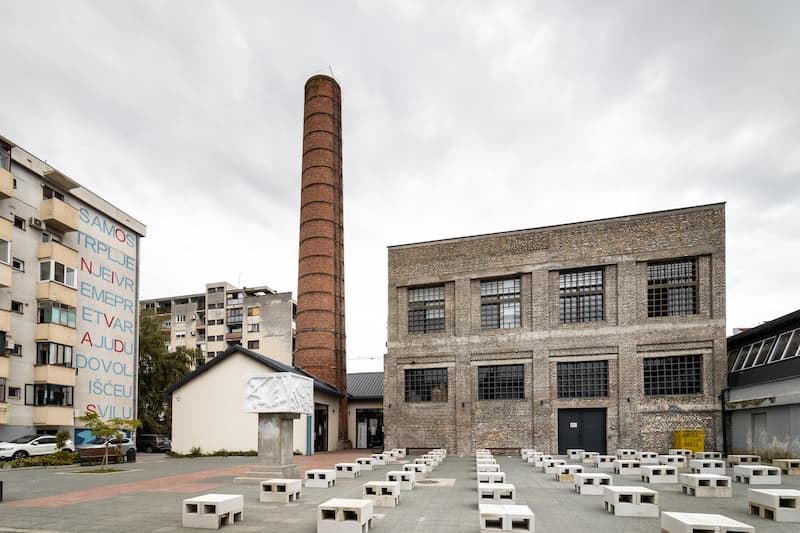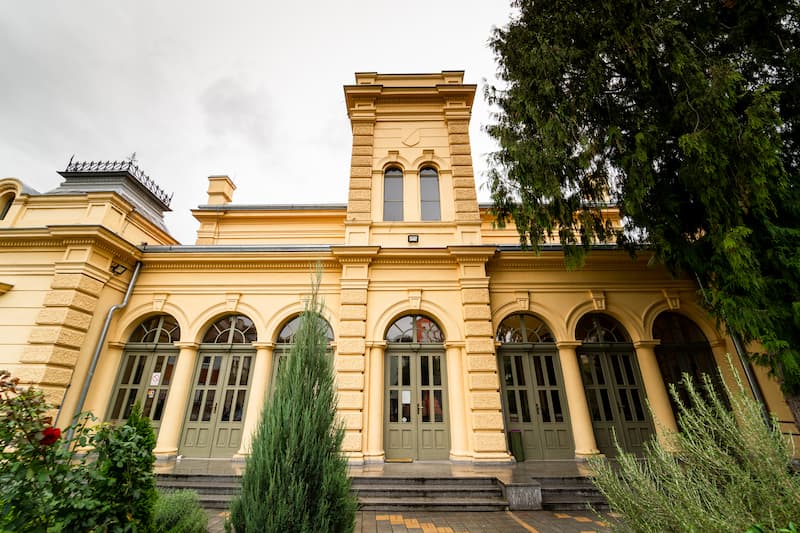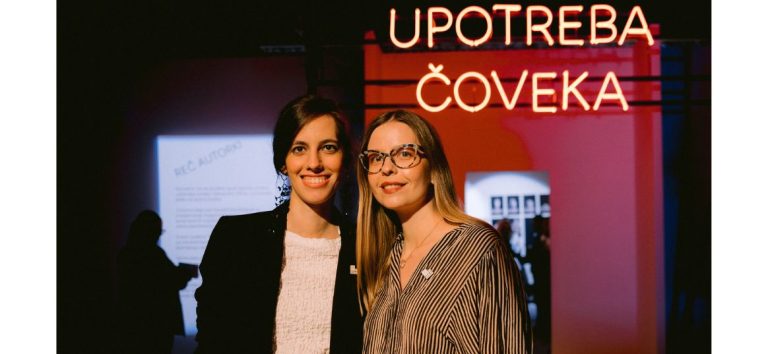With the opening of the fifth Kaleidoscope of Culture, Novi Sad became a city – kaleidoscope and thus additionally activated Novi Sad’s neighbourhoods and spaces, which became new legacies, cultural centres and new centres of artistic events. These cultural spaces are part of the rich historical heritage of Novi Sad. In the next five weeks, the Kaleidoscope of Culture brings us five types of art that will intertwine throughout Novi Sad for five weeks – literature, architecture, performing arts, visual and applied arts. After the opening week of the Kaleidoscope of Culture, the focus is on architecture, and we discuss the rich cultural and historical heritage and the restoration and repurposing of old spaces at the conference Legacies of Architecture in the District, where we will hear stories about all the architectural legacies of the European Capital of Culture.
District in the area of Liman is being transformed from an abandoned industrial complex, better known as Chinese Quarter, into a centre of Novi Sad’s contemporary creativity. Korzo, the former promenade of Novi Sad, is revived for the fifth time on one of the city’s central boulevards, with the sounds of a grandiose open-air classical music concert and violinist Julian Rachlin. The Suburbium of the Petrovaradin Fortress, which gained a new shine after 300 years of renovation, becomes the Booktown, the city centre and Gallery Square become the epicentre of visual art, where the works of the painter Sava Šumanović created between the two world wars, are shown for the first time. Spens is a place that will bring together the design community from the entire region. Under the spotlight of the Kaleidoscope of Culture, there will be a network of cultural stations, as new centres of culture and a new cultural model in this part of Europe, where numerous workshops, performances, exhibitions and other events will be held
Let us take a look at the history of these spaces, which will serve as the stage for numerous cultural events in our city.
Distrikt
District was an industrial quarter of Novi Sad, which developed within the industrial zone along the Danube. After World War I, Bridgehead was demolished in 1923 and the exit of Novi Sad to the Danube was enabled. The development of Liman and the beginning of the construction of a new industrial zone on Great Liman started. In the 20s of the last century, numerous industrial buildings were built on the great Liman, more precisely on the area of today’s Chinese Quarter. The name ‘Chinese Quarter’ originated among the Novi Sad residents themselves, who said that there were Chinese workers there, referring to their number. In the seventies of the last century, the emigration of industry from Liman began, first of all the giant of the bolt, wire and iron goods factory ‘Petar Drapšin’. Since then, the Chinese Quarter has become a dilapidated and neglected part of the city. Craftsmen move into some abandoned factory barracks. The remains of dilapidated factory halls and apartments for working families were on the verge of complete demolition.

Thanks to ECoC, Novi Sad managed to save this legacy from destruction and turn it into a new District of Culture, a new ‘drive’ of culture and artistic events. This is how District looks like today.

Korzo
Since ancient times, Novi Sad has always had its promenade, only its location has changed. The city promenade was crossed by foot in your best outfit initially on non-working days, and later every day, from the early afternoon until the first dusk. The famous promenade led from the end of Dunavska Street to Brukšanac, then along the newly renovated Danube Park and in the very centre, today’s Kralja Aleksandra, Zmaj Jovina and Dunavska streets.
In the twenties and thirties of the 20th century, the promenade moved to the first built boulevard in Novi Sad, Kraljice Marije Boulevard. The boulevard was built on the once flooded area of Liman between the old city centre and the Danube. By filling in the earth, the field was raised at an elevation safe from the high water levels of the Danube. Thus, the creation of this part of the city was made possible, where the main street became Kraljice Marije Boulevard. At the same time, Novi Sad became the centre of the Danube Banovina, so the grandiose Banovina building and the Post Office were built on the newly formed boulevard, and a little later, office buildings and the Stoteks department store. A large number of representative buildings of modern architecture were built in the area, for the needs of officials. The architects whose works dominate the view of this part of the city are Dragiša Brašovan and Đorđe Tabaković. Due to the construction of the new boulevard, several historically valuable buildings were destroyed, such as the Armenian church, and the Gallery Square was closed with an inadequate building on the back side.
In the period after the World War II, the Novi Sad promenade will be located here, with the Carigrad pastry shop and the Bulevar café. The boulevard itself will be renamed Marshal Tito Boulevard, and in the nineties of the last century to its current name, Mihajla Pupina Boulevard. The boulevard stretches from the Varadin Bridge, built in 2000, on the piers of the earlier bridges of Maršal Tito and Prince Tomislav.
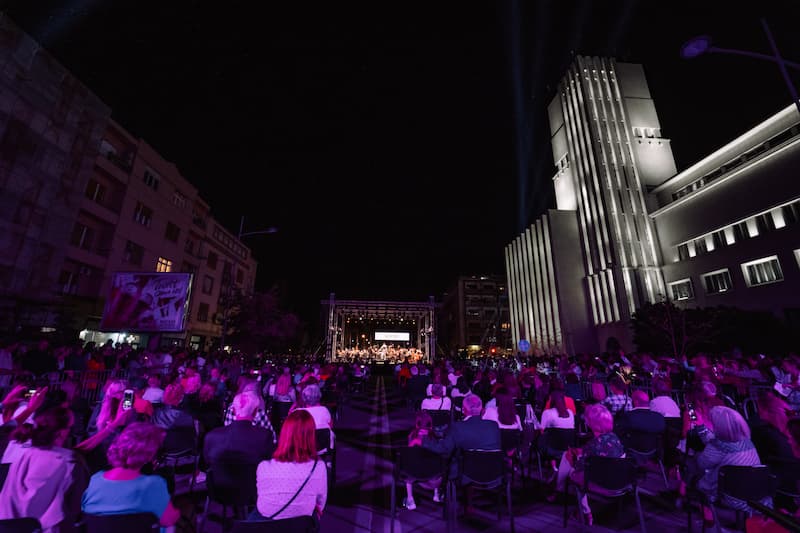
Suburbium
Suburbium is an old baroque town in the lower part of the Petrovaradin Fortress. The first phase of the creation of Suburbium is related to the period from 1692 to 1728 when sacral objects were built. It is surrounded by moats, which were once filled with water. Today, a main road passes through this small town, and a railway once passed through the famous Štrosmejerova Street. A large number of military facilities are located here, as well as a military hospital, housed in an adapted building of the old Franciscan monastery, which was abolished in 1772, by order of Joseph II. In the aforementioned Štrosmajerova Street in the Suburbium of the Petrovaradin Fortress, there is a church with a Franciscan monastery of St. George. This is the oldest church in Petrovaradin, which was built in the period from 1701 to 1714. The church is in the Baroque style, without too much decoration, with a bell tower 25 metres high. The front of the church is decorated with statues of St. Francis Xavier and St. John of Nepomuk, and above the main entrance to the church there is a relief image of the Mother of God with a child in her arms.
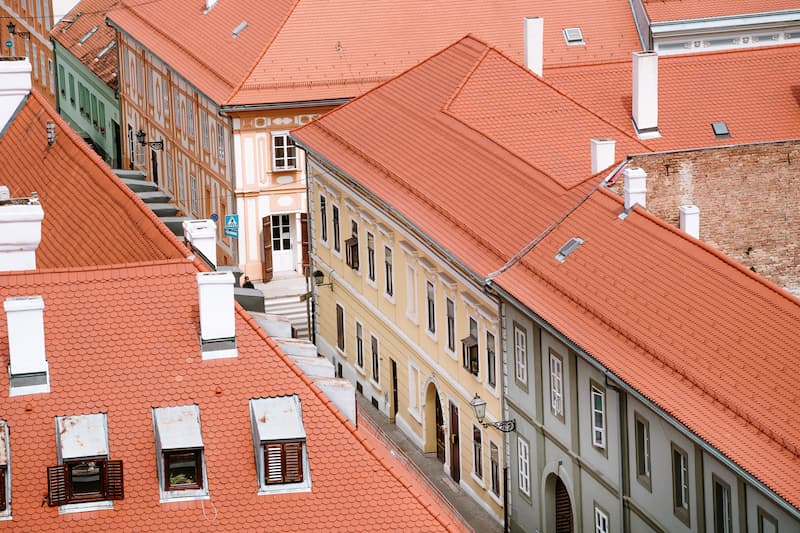
This cultural heritage, which was built during the 17th and 18th centuries, has been restored to meet the European Capital of Culture title year, and the old façades of the buildings have shone in pastel colours, with lavish filigree details and sculptural figures of saints, as well as kibitz fensters, characteristic of this climate. The Literature Week of the Kaleidoscope of Culture will turn the Suburbium into the centre of books, and will bring together numerous local, regional and foreign writers, as well as lovers of the written word in one place. Do not miss it!
Novi Sad Downtown
The Kaleidoscope of Culture will also put the downtown of Novi Sad in the foreground. The city centre delights with its architecture and proudly highlights its many landmarks, such as the Church of the Name of Mary, better known as the Cathedral among the people of Novi Sad, the monument to Svetozar Miletić, the oldest theatre – the Serbian National Theatre, Matica Srpska, City Library in one of the oldest streets in Novi Sad, etc.
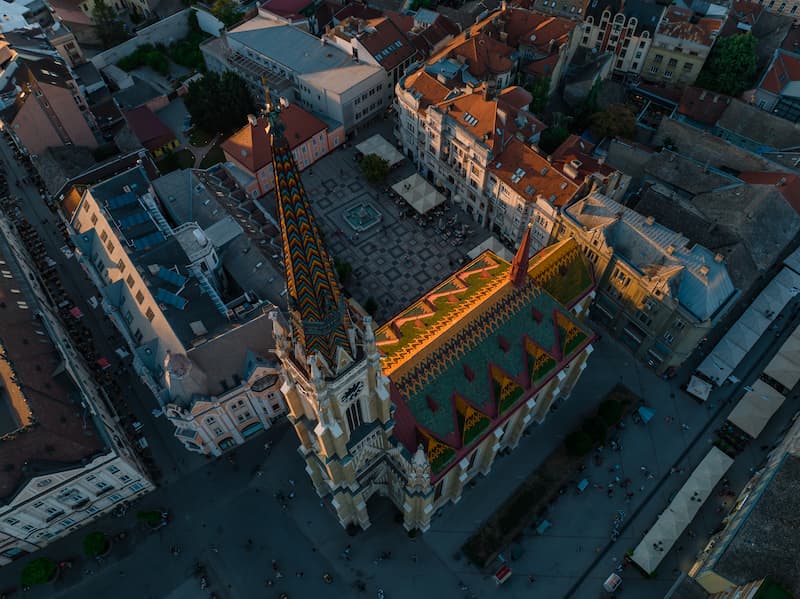
There is, of course, the Gallery Square – a space that unites three museum-gallery institutions: Gallery of Matica Srpska, Pavle Beljanski Memorial Collection and Rajko Mamuzić Gallery. Museum institutions in the Gallery Square, which are necessarily on the list of sights of almost all visitors to Novi Sad, with their activities, collections and various programmes enliven the square and make it the artistic seat of Novi Sad. As part of the Kaleidoscope of Culture, the Gallery Square becomes the centre of a large exhibition of paintings by Sava Šumanović, which we highly recommend you to visit from 24 September.
Almaš Neighbourhood
One of the oldest parts of the city, the Almaš neighbourhood, has a unique atmosphere in Novi Sad. Unlike other parts of the old city core, Almaš neighbourhood is a place where people live and work in a modern way, in the existing traditional environment. A tangle of winding and intertwined alleys hides an interesting history. This city neighbourhood was established in 1718 by the inhabitants of the village of Almaš, who brought the toponym Almaš with them. Thus, the historical Almaš neighbourhood was created almost suddenly by the compact relocation of the inhabitants of the village of Almaš to the outskirts of Petrovaradin Šanac.
From a historical and urban point of view, the Almaš neighbourhood is almost the same as it is shown on the oldest surviving maps of the engineer Anton Kaltšmit from 1745. It is a complex of winding streets which (according to today’s names) is bounded by Temerinska Street, Marija Trandafil Square, Đorđa Rajkovića Street, Zemljane Ćuprije Street, both sides of Matice Srpske Street, Koče Kolarova Street and Almaška Street. We can say that the Almaš neighbourhood was surrounded on three sides by road routes on which economic and social life developed (transport, trade, crafts, taverns). Irregular street lines are conditioned by the arrangement of dry beams.

The most famous people from the Almaš neighbourhood are Đura Daničić, painter Petar Dobrović, journalist, writer and translator Aleksandar Popović Zub, Đura Popović Graničar, who was the first to translate Don Quixote into the Serbian language, Svetislav Ivan Petrović, the first Serb who made an enviable film career in Europe between the two world wars, and Marko Nešić, tambura player.
In the period after World War II, Almaš neighbourhood became a residential area. From today’s perspective, the marginalization of the Almaš neighbourhood is a fortunate circumstance, because, as it was not exposed to modernization that fundamentally changed the old core of the city, it remained almost completely preserved until the 90s of the 20th century. What makes the Almaš neighbourhood interesting and significant today is its interior, the slow pace of change and the devotion of the population to traditional culture. Today, the Almaš neighbourhood is a unique architectural and urban complex, in which the old spirit of Novi Sad can still be felt. Its streets are permanent monuments of culture that will be discussed in the framework of the Legacies of Architecture conference.
Spens
A large number of us regularly pass through Spens today, attending sport events, without even realizing the size and importance of this building. Spens is one of the giants of our modernist architecture, once a progressive building. The name Spens was immediately accepted among the citizens, as an acronym for the Table Tennis Championship of Europe Novi Sad, for whose needs this facility was built. Spens was opened on 14 April 1981, for the 36th World Table Tennis Championship. Its construction began in May 1979, in a place where a small industrial zone, railway sheds, was previously located, a rather unsightly part of the city. Spens is designed to be wide and low, like Vojvodina. When positioning it, the architects even had in mind the path that led through the muddy industrial zone, which the citizens themselves made walking from the centre to the faculties. Thus, Spens is adapted to the habits of the residents of Novi Sad. The facility was not fully built until the opening of the world championship in 1981. Its modular structure allowed certain parts to be added in the following years, which was done until 1990. So Spens got courts for basketball, volleyball, table tennis, boxing, judo, karate, wrestling, bowling, ice hockey, skating, archery and swimming. It hosted numerous European championships in basketball, boxing, handball… The famous Michael Jordan also played a basketball game here in 1982.

Sports and business centre Vovodina, a company that today includes Spens, consists of: halls (Large, Small and Ice Hall), indoor and outdoor swimming pool, bowling alley, training and competition halls for boxing, judo and table tennis, shooting range, tennis courts, a congress centre with accompanying facilities and a gallery, an amphitheatre for gatherings and film screenings, about 215 premises, the Karađorđe stadium and a garage with a parking space.
The designers of Spens were the Sarajevo architect Živorad Janković and his associates. Today, Spens is a famous concert venue that has hosted numerous names of the local music scene. Within the Applied Arts Week, the fifth Kaleidoscope of Culture will also turn this space and one of the toponyms of Novi Sad into a design centre.
The city of Novi Sad is a capital that lives through culture, which is supported by the project of cultural stations, a network of cultural events in different locations. They present the restoration of cultural heritage, the decentralization of culture and the development of cultural and creative industries, making culture more accessible to all citizens and tourists. This is a unique model of culture, created by the efforts of the ‘Novi Sad – European Capital of Culture’ Foundation and the City of Novi Sad.
Cultural Stations
The network of cultural stations represents a bridge between citizens, artists, organizations and cultural institutions and enables them to implement and popularize their content much more easily. It consists of renovated and brand new art centres, each different and adapted to different cultural content. Due to the fact that they were created in renovated buildings, in old and abandoned locations, today they represent the guardians of cultural heritage, where visitors have the opportunity to get to know the local architecture, lifestyle, habits and customs of the citizens. Those stations are: Egység, Svilara, Liman, Barka, Bukovac, Mlin, Rumenka and the mobile cultural station on wheels Caravan. See how Egység and Svilara used to look like.
The first cultural station of the city of Novi Sad is Egység. This magnificent building from 1890 was designed by the famous architect György Molnár, in honour of the 100th anniversary of the Rifle Association. It was forgotten for a long time, until it was renovated in 2012. Today it is a space suitable for exhibitions, concerts and other creative events. Another cultural station that was created by the remodeling of the former silk dyeing factory is Svilara. It is a symbol of industrial heritage in the Almaš neighbourhood. With its contents, Svilara is open to all artists, organizations, and citizens. This is how these cultural centres look like today.
Where does culture grow? In the Mlin Cultural Station, of course. It is at the service of the youngest, whose contents are implemented here by the Novi Sad Children’s Cultural Centre and Raspustilište. This cultural station is located in Radnička Street, in the old Danubius pasta factory. Liman Cultural Station is another station built on the assets of the industrial heritage. It is also the first facility of the District, a unique cultural quarter in Great Liman. This cultural space was created from dilapidated factory barracks, so-called Chinese Quarter. Barka Cultural Station is located on the edge of the city, at the end of Slana Bara, Vidovdansko naselje and Klisa. It is located within the local community and the branch of the City Library. Bukovac Cultural Station represents a new model of consumption of cultural content, due to its large green area, sports and ecology. It is possible to watch films from the original filmstrips from old projectors here. All this makes Bukovac an ideal place to escape from the city crowd. Rumenka Cultural Station improves the previous work of the cultural centre of the same name and adapts to the diverse ethnic composition of the population.
Author: Author: Ljiljana Dragosavljević Savin, MA Historian
Photo: Jelena Ivanović, Vladimir Veličković, Filip Petronijevi

